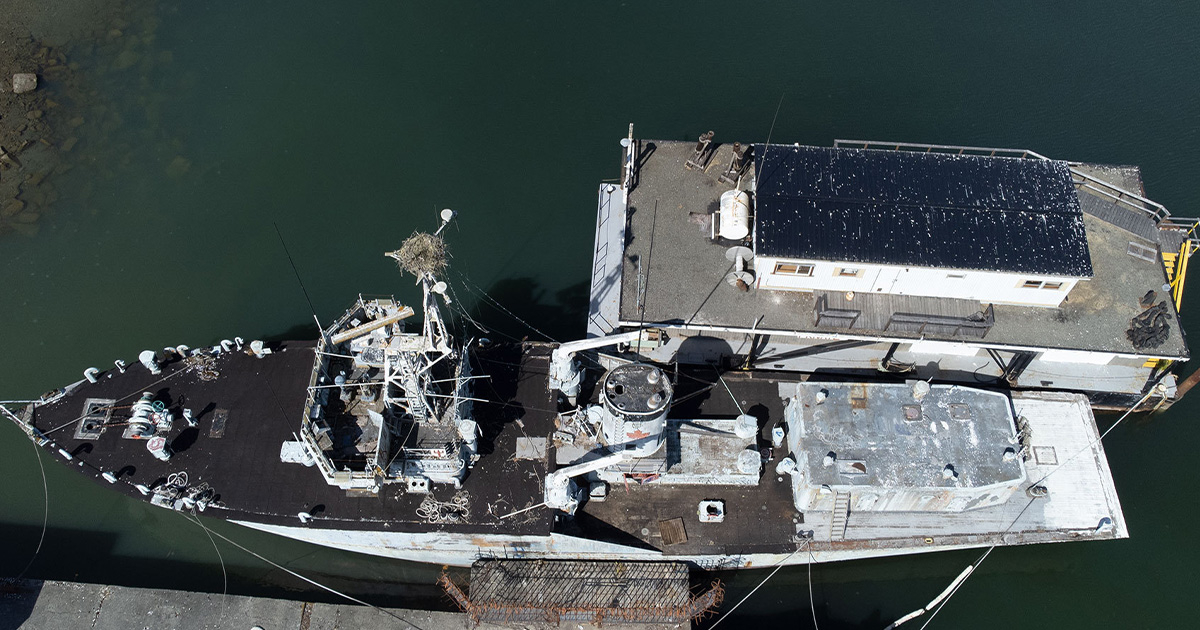The Future of Our Blue Planet

Ocean technology has important applications for ocean sectors, whether traditional or emerging, as we seek to move faster, with greater safety and sustainability, better understanding our ocean and how climate change is impacting it, and the ability to efficiently leverage the power of data in making the best decisions.
This is where ocean tech companies—from nimble startups to larger, more mature firms—are delivering important solutions to the market and unlocking significant growth in the blue economy. It’s not just the rise of the blue economy, however, that is driving demand and opportunity in ocean technology. It’s the future of our planet.
On the path to energy transition, more mouths to feed worldwide, more goods to move, and making the changes necessary to meet our global commitments to net zero, none of this can be achieved without the ocean—and ocean technology as an enabler. The United Nation’s Sustainable Development Goal 14 focuses on the sustainable use of oceans, sea and marine resources for sustainable development, as a part of a broader global agenda to help address global challenges.
An updated report by the High Level Panel for a Sustainable Ocean Economy shows that up to 35 to 50 percent of emissions reductions required by 2050, on the journey to 1.5 C, can be achieved through the ocean. And in doing so, there is significant economic opportunity, increased attention on purpose driven ocean innovation, and the need for more investment in the ideas, the projects and the companies that can deliver on the potential of our ocean.
REACHING GLOBAL MARKETS
In the race against time in emissions reduction, Canadian ocean technology is enabling solutions that reduce emissions today, and on the path to more carbon-neutral solutions in the future. These solutions generate new revenues, scale more companies, and increase competitiveness for Canada as a leader in ocean enterprise. For example, Graphene Innovation Technology, along with its project partners, just four years ago launched its Smart Protective Coatings Project through Canada’s Ocean Supercluster (OSC), and today has not only demonstrated significant emissions reductions for vessel operators with the application of their hull coatings, but has built a customer base in 50 different countries.
SMART SEAFOOD
With a growing global demand for protein combined with the expectation for sustainability and transparency from consumers, the seafood industry is adopting advanced technologies including artificial intelligence (AI) to inform decision-making, smarter fishing technologies, and remote operation capabilities. This includes the wild and farmed seafood that we traditionally associate with our ocean but also seaweed and other emerging seafood alternatives. Announced in Montreal in September, Kitchener, Ontario’s Coastal Carbon ocean monitoring company and seaweed farming company, Holdfast of St. John’s, Newfoundland, have partnered up to develop a project as a part of Canada’s Ocean Supercluster’s new AI Ocean program that will deliver a small, non-intrusive, AI-enabled sensor for online remote biomass monitoring of seaweed growth for operators, and of particular benefit to rural and Indigenous communities.
EMPOWERING COMMUNITIES
In building innovative ocean solutions that contribute to the health of our planet, Indigenous communities not only bring a close cultural connection to the ocean but also bring valuable knowledge, experience, and insight. That is particularly critical to coastal resiliency, where it is a win-win when Indigenous partners are active participants in developing and delivering solutions that empower communities.
A great example is Canada’s Ocean Supercluster’s Coastal Incident Management System (CIMS) Project. Led by Shift Environmental, the British Columbia-led project provides coastal, Indigenous, and remote communities a cost-effective rapid response package, including a mobile command, control and communications system, data analysis tool and mobile incident platform for marine emergencies.
Through CIMS, Indigenous knowledge is combined with communications software and hardware; novel response equipment, procedures and training; and uncrewed surface vessels and aerial vehicle designs for spill detection, immediate response, and persistent monitoring.
BUILDING PARTNERSHIPS
The more emerging ocean tech companies we help get started, and the more we bring together startups with mature companies to develop commercial solutions, the more economic value and growth will be generated. On Deck Fisheries out of Vancouver, British Columbia is just one example of an early stage SME that participated in the OSC’s Ocean Startup Project programming, and now leading a project. They won the Ocean Idea Challenge for early stage startups just 18 months ago, and now more established, the SME has undergone rapid growth and leads Canada’s Ocean Supercluster’s recently announced AI for Scaleable Fisheries Monitoring Project.
With strong innovation ecosystems across the country, Canada continues to focus on becoming the best place to start and grow an ocean company, and a partner of choice in global partnerships and collaborative opportunities.
Canadian ocean technology is playing a leading role in addressing some of the biggest challenges of our generation, where SMEs are starting, scaling and competing for global contracts (and winning) in a way we have never seen before. This is the future of ocean technology working at break-neck speed for the future of our planet. And that future is now.
This story was originally featured in ON&T Special Edition 2023. Click here to read more.

